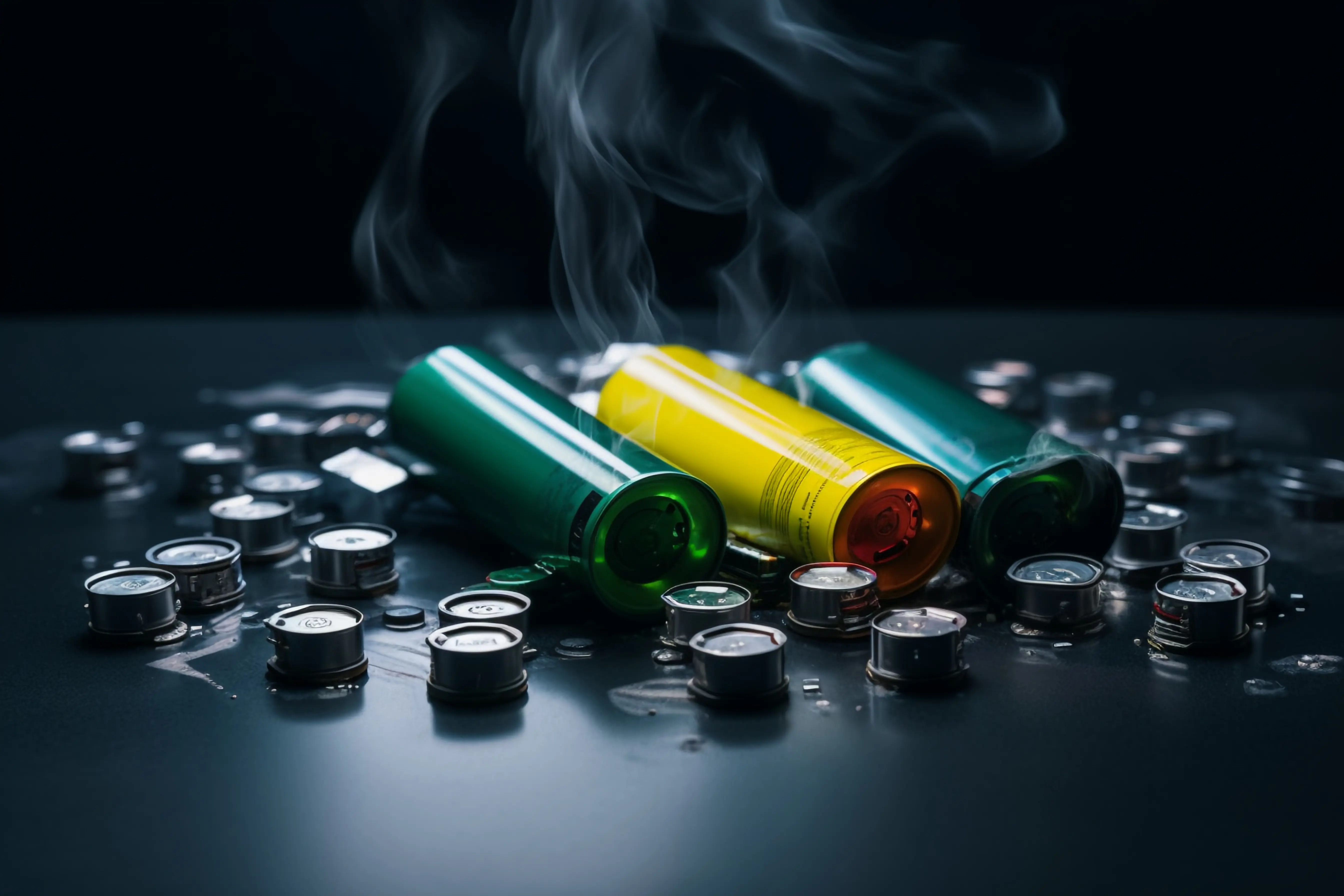Utilize high-purity solvents for efficient lithium extraction, achieving up to 99% purity with advanced liquid-liquid extraction techniques.
Understanding Lithium Extraction
Importance of Lithium Extraction
(Lithium extraction is a highly necessity need to produce batteries for electric cars, smart phones and renewable energy storage systems.) In the next 10 years, lithium demand will increase by more than 500 percent — which makes efficient extraction methods all that much more valuable. Extraction is the process of separating lithium from its ores or brine deposits, and processing it into a form that can be used in end-systems.
Lithium Sources
There are two primary sources of lithium supply:
- Hard rock (spodumene)
- Brine deposits
“What they are not made of or found in is spodumene, a lithium-rich mineral that rests in hard rock deposits and needs to be extracted using conventional mining practices.” Brine deposits, which are found in underground reservoirs, contain dissolved lithium salts and generally occur in arid regions like the Lithium Triangle in South America (parts of Chile, Argentina and Bolivia).
Extraction Methods
Hard Rock Mining:
- Involves either traditional open-pit or underground mining.
- The mined ore is then crushed and processed to extract the lithium concentrate.
- This method is energy-intensive and needs ample water resources.
Brine Extraction:
- Brine is pumped to the surface and taken to evaporation ponds.
- These evaporate the sun’s heat leaves water, only to generate lithium-rich salts.
- Once obtained, the salts are then further processed to produce lithium drugs in the form of either lithium carbonate or lithium hydroxide.
Processing Steps
Crushing and Grinding:
- The ore will then be crushed into small pieces to try and release lithium minerals.
- In the case of brine, such a solution is concentrated by solar evaporation.
Concentration and Purification:
- The lithium concentrate can be separated using flotation or magnetic separation methods.
- The brine is subjected to chemicals to remove impurities like magnesium and calcium.
Conversion to Usable Form:
- Lithium concentrate is converted to either lithium carbonate or lithium hydroxide.
- It involves chemical reactions and multiple purification steps to get it all the way up to battery grade.
Environmental Impact
“The environmental ramifications of lithium extraction are substantial. Habitat destruction and soil erosion, along with contamination of groundwater are the consequences of hard rock mining. Brine extraction affects local water resources, which is particularly concerning because the regions where lithium is commonly found are already dealing with water scarcity. Some companies are investing in more sustainable technology, such as direct lithium extraction (DLE) technologies. These promise a smaller environmental footprint by using less water and fewer chemicals.”
Key Equipment for Lithium Extraction
Crushing and Grinding Equipment
The efficiency of lithium extraction starts with how the ore is crushed and ground. With spodumene, the hard rock is reduced to a more manageable size. This is generally achieved with jaw crushers and ball mills.
- Jaw crushers crush large rocks to more manageable sizes.
- Ball mills pulverize the materials into fine powder.
For example, if processing a silicide at 600 tons an hour you’re not only processing efficiently but doing so with the least amount of expenditure.
Flotation Cells
After the ore is ground to a desired size, it must be concentrated. This stage is then followed by flotation cells, which ensure that lithium minerals are separated from other materials. The bubbles, with a bit of chemical assistance, will go after lithium particles and ignore other sorts that may be present. The lithium-rich bubbles will float atop their watery surroundings, allowing for easy removal.
Modern flotation cells are able to process up to 400 cubic meters of slurry per hour, greatly increasing lithium concentrate yield.
Evaporation Ponds
We cannot do without evaporation ponds for lithium extraction from brine. These large, shallow ponds evaporate water with the help of solar energy to concentrate lithium contents. The ponds can cover vast areas, with some extending to over 5 km². The brine then evaporates for 12-18 months, until the lithium concentration in the water increases from about 0.2% to over 6%.
Reactors and Kilns
The processing phase necessitates the use of high-temperature reactors and kilns to change lithium concentrate into usable lithium carbonate or, in some instances, lithium hydroxide.
- Reactor: These are used to perform the chemical reactions required to purify lithium compounds and convert them into usable form.
- Rotary kilns: Operated at temperatures of more than 1,000°C, they have a daily throughput of 10,000 tons.
Filtration and Filtering Purification Systems
The filtration system is vital in the extraction of impurities from the lithium solution. Filter presses of high capacity and ion exchange systems are the usual options.
- Filter presses can dehydrate and cleanse as much as 20k liters per hour of all magnesium and calcium contaminants present in the final material.
- Ion exchange systems further purify the lithium solution down to desired levels of purity for battery-grade lithium.
Environmental Control Equipment
Since the environmental impact of lithium extraction is significant, modern facilities feature sophisticated environmental control equipment. Crushing and grinding operations have dust suppression systems to lower < 20 µm airborne particles.
Water treatment plants are important in controlling and handling wastewater to avoid chemicals that may have a negative effect on the environment. The facilities process approximately 50,000 liters of wastewater an hour, enabling compliance with environmental standards.

Solvent Extraction Methods
Introduction to Solvent Extraction
Solvent extraction can get quite complex, so I’ll provide an introduction to what solvent extraction is. There are a few other topics you should understand if you want to be prepared for the pool: Solvent extraction is an important process in lithium production, used mainly to extract and separate lithium from a brine solution. This involves the use of certain organic solvents which specifically form complexes with Lithium ions and hence remove these Lithium impurities from other contaminants. Solvent extraction has the advantage of high efficiency so that 99.5% lithium can be leached successfully and converted into battery-grade lithium with fewer impurities.
Key Solvents Used
Numerous solvents are used in lithium extraction, as they can be selected due to their selective interaction with lithium ions. Commonly used are:
- Tributyl phosphate (TBP)
- 2-ethylhexyl phosphoric acid mono-2-ethylhexyl ester (P507)
The brine solution is then mixed with solvents, which combine with the lithium and separate it from elements such as magnesium or calcium.
Extraction Process Steps
To produce high-purity lithium, the solvent extraction includes several steps:
Make Brine Solution:
- This brine should be pre-treated to get rid of any large particulates and irritating chemicals.
- To filter and to make the required chemical adjustments to reach the appropriate pH levels.
Mixing with Solvent:
- The pre-treated brine is then mixed with the selected organic solvent.
- The mixture is shaken thoroughly to allow the optimal interaction of lithium ions and solvent.
Separation:
- After this, the solution is permitted to settle.
- The lithium-bound solvent is lighter than the brine, so it settles on top.
- This step is normally done in large settling tanks where a lot of water can be treated at once.
Stripping:
- The lithium-rich solvent is fed into a process that strips out the lithium ions—usually an acid solution does the dirty work.
- These stripped lithium ions are then re-collected and processed to create lithium carbonate or lithium hydroxide.
- Stripping efficiency can exceed 95%, so that little lithium is lost in the process.
Efficiency and Yield
Solvent extraction has an exceptionally high efficiency where modern methods can achieve in excess of 99% extraction. This high yield is important to overcome the growing demand for lithium in the battery sector. Moreover, this solvent method is highly scalable and can therefore be tailored to small- and large-scale applications.
Environmental Considerations
Although solvent extraction is highly effective for rare earth separation, it also brings the pollution issue into a human remote activity. Due to its use of organic solvents, the risk of contamination associated with handling and disposal must be prevented. To avoid wastage and environmental damage by products, we are equipped with state-of-the-art solvent recovery systems to recycle and reuse solvents. Recovery is up to 90%, which makes it more efficient, since the quantity of fresh solvent that needs to be supplied can be reduced considerably.
Case Studies and Applications
Solvent extraction has been integrated into various lithium production facilities. One example is the Salar de Atacama in Chile, which uses solvent extraction to extract high-purity lithium from its brine resources. More than 70,000 tons of lithium carbonate are made at this facility each year — a demonstration of just how large and efficient the approach can be.

Liquid-Liquid Extraction Techniques
Overview of Liquid-Liquid Extraction
Liquid-Liquid Extraction (LLE) is a flexible technique for lithium extraction, very effective in separating lithium from other elements when processing brine solutions. During the process, lithium ions are transferred between one liquid phase and another with the assistance of a solvent that helps increase the purity and yield. LLE is considered a phenomenon of great precision and speed, being one of the relevant features in current lithium production.
Principles of Liquid-Liquid Extraction
LLE can be achieved when the two compounds have differing solubilities in two immiscible liquids. Normally, an aqueous (brine) and organic (solvent) phase is chosen. The lithium ions selectively transfer from the aqueous phase to the organic phase, owing to their solvent affinity. The selection of the solvent is very important because it has to exhibit a high lithium selectivity and must not be miscible with water.
Solvent Selection and Preparation
The proper selection of a solvent is critical for successful LLE. The most commonly used solvents are tri-n-butyl phosphate (TBP) and di-2-ethyl-hexyl phosphoric acid (D2EHPA). Preparation of the solvents in particular concentrations is carried out for efficient extraction of lithium:
- Solvent Concentration:
- The solvent is usually used in a concentration of 10–30% with respect to the organic diluent.
- The concentration is regulated according to how much lithium the brine contains, and also depending on desired extraction efficiency.
- Mixing Ratio:
- The organic phase is then mixed with the aqueous phase in an appropriate ratio, typically 1:1 v/v to ensure efficient contact and Li ion exchange.
Extraction Process
The LLE process can be summarized in the following main steps:
- Mixing and Contacting:
- Brine is mixed with solvent in extraction units, such as mixer-settlers or centrifugal contactors.
- These units provide aggressive mixing for lithium ion transfer into the organic phase.
- Phase Separation:
- The solution is left to settle, forming two separate phases.
- The lithium-rich organic phase is separated from the aqueous phase with very low cross-contamination.
- Back-Extraction (Stripping):
- The lithium-laden organic phase is contacted with an aqueous stripping solution, typically a dilute acid, to back-extract the lithium ions into the aqueous phase.
- This step prepares the lithium ions for further purification.
- Purification and Recovery:
- The back-extracted lithium solution is further purified to remove any remaining impurities.
- The final product is then recovered, precipitated, and further converted into either lithium carbonate or lithium hydroxide.
Efficiency and Yield
Liquid-liquid extraction is highly efficient, with an extraction rate that typically exceeds 90%. Because of the precision associated with the method, lithium can be selectively separated from rather complex brine compositions. Advanced LLE systems can accommodate much larger volumes: industrial-scale units may process 100,000 liters per day or more.
Environmental Impact & Sustainability
LLE methods have less environmental impact:
- Recycling solvent by using closed-loop systems that minimize waste and fresh solvents.
- Investigations are being carried out for the use of nontoxic and biodegradable solvents to improve sustainability.
These advancements work to maintain what LLE boasts as an environmentally friendly method of lithium extraction.
Case Studies and Applications
One example of significant lithium extraction operations using LLE techniques is the Salar del Hombre Muerto brine held in Argentina. Here, LLE has been successful at achieving efficient lithium extraction, lending to its high salinity. This operation currently produces tens of thousands of tons of lithium carbonate per year, illustrating the adjustability and efficiency level possible with LLE.
Safety Measures in Lithium Extraction
Lithium Extraction Safety: A Primer on Guidelines and Best Practices
From an environmental perspective, the most important consideration in lithium extraction is ensuring that these activities are conducted safely—in part because of mining and chemical-processing risks. This means ensuring the safety of workers, equipment, and environments by using measures and advanced technologies. Adoption of a complete security mechanism will help in taking proactive measures and preventing any further risks.
Personal Protective Equipment
Use of Suitable Personal Protective Equipment (PPE): Safeguarding workers involves using standard PPE required for lithium extraction, including:
- Demistering of dust and chemical vapors using respirators.
- Protective garments, such as skin-work gloves and helmets.
- Heat-resistant suits to prevent contact with harmful chemicals.
- Safety goggles and face shields to protect eyes from chemical splashes and flying debris.
- Required training and compliance-checks for correct use and maintenance of PPE.
Chemical Handling and Storage
It is particularly vital to ensure the chemicals utilized for lithium extraction are handled and stored responsibly. Key practices include:
- Identifiable labeling and segregation to prevent unintended reactions.
- Well-ventilated storage areas to eliminate toxic fumes and mitigate toxic gas risks.
- Spill containment using bunds and spill kits to manage unintentional releases instantly.
- Regular inspections and maintenance of storage structures to ensure safety.
Dust and Fume Control
Maintaining air quality and safeguarding against respiratory diseases through dust and fume control is crucial. Effective control measures include:
- Air pollution control measures, such as water sprays and dust collectors during crushing and grinding operations.
- Fume extraction systems in areas where chemicals are mixed or heated, like extraction units and kilns.
- Whole-home filtration systems that drastically decrease the risk of inhaling infectious material by up to 99.9%.
Environmental Protection
Taking environmental safety precautions to protect ecosystems from lithium extraction involves:
- Systems for water management to process, reuse, or properly contain wastewater, preventing contamination of local watersheds.
- Preventing soil erosion and air pollution by controlling dust in open-pit mining.
- Rehabilitation strategies to restore mined-out areas, increase biodiversity, and minimize long-term environmental impact.
- Monitoring programs to ensure sustainability of the extraction process and track environmental impacts.
Monitoring and Continual Improvement
Continuous monitoring and improvement are necessary to maintain high safety standards. This involves:
- Systems for real-time monitoring of safety parameters and keeping records of air quality, chemical levels, etc.
- Feedback loops for evaluating incidents and near-misses to evolve safety practices.
- Use of state-of-the-art technology to improve monitoring capabilities, serving as early-warning systems and predictive maintenance measures to prevent accidents before they occur.
